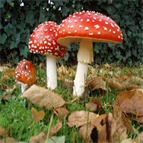Find methods for your needs
Refine by Feature
Displaying 1-4 of 4 results for Tag: Accela UHPLC
High Resolution LC-MS for Screening and Quantitative Analysis of Antibiotics in Drinking Water Using an Orbitrap and Online Sample Preparation
Instrument Type: LCMSMost current methodologies for the quantitation of antibiotics in drinking water revolve around analysis using triple stage quadrupole platforms with offline sample preparation. This is a proven technique for the analysis of many contaminants in various types of water samples, but the offline sample preparation steps are time-consuming and prone to operator error and reproducibility problems. We demonstrate the ability to directly inject the water sample without any offline preconcentration. We utilize LC-MS with a Thermo Scientific Exactive Plus Orbitrap MS using HR/AM.
A Novel Screening Method for Anthropogenic Sewage Pollutants in Waste Water, Ground Water and Drinking Water Samples by LC-HRAM Analysis
Instrument Type: LCMSThere is a growing public concern about potential contamination of water and the environment with anthropogenic compounds and their degradation products and possible negative impacts on nature and public health. We describe a method that uses the Thermo Scientific Q Exactive mass spectrometer with an Accela Open Autosampler to fully automate the analysis of waste water and drinking water for anthropogenic compounds down to low ppt concentration levels without time consuming solid phase extraction.
Validated Method for the Analysis of Lipophilic Marine Biotoxins in Bivalves by Liquid Chromatography-High-Resolution Mass Spectrometry
Instrument Type: LCMSA harmful algal bloom is a serious environmental problem that results when the population of microscopic algae in a water system rapidly increases. The algae have the ability to produce marine biotoxins (MBTXs), which are dangerous to humans and other aquatic life. These biotoxins can accumulate in filter-feeding bivalve mollusks and, in turn, pose significant food safety risks to humans who ingest the shellfish, including gastrointestinal illnesses or neurological disorders. We describe a UHPLC with HRMS/MS method that delivers excellent results in the quantitative analysis of MBTXs.
Identification of Psychotropic Substances in Mushrooms and Chocolate by UHPLC/MS
Instrument Type: LCMSThe identification of controlled substances in food matrices is a challenge for forensic laboratories. Classical techniques, such as color tests and thin-layer chromatography, do not provide molecular structural information and cannot be used as a principal means of identification. Infrared spectroscopy (IR) and gas chromatography/mass spectrometry (GC/MS) can identify controlled substances, but suffer from several shortcomings. We describe a UHPLC/MS method for the detection, separation and confirmation of psilocybin and psilocin in mushrooms and chocolate matrices.




